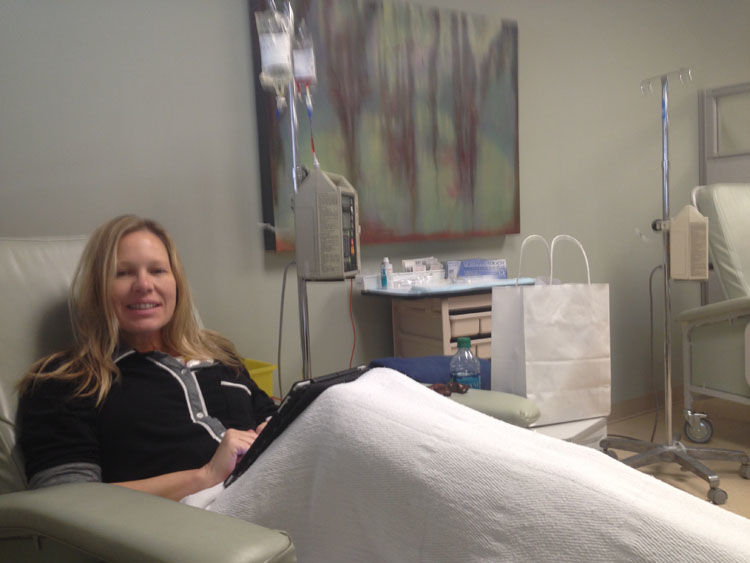Cancer Fertilizer
Published 7:00 am Tuesday, October 4, 2016

- Cancer Fertilizer
By Amanda Jean Elliot
It seems like every other day someone is telling you something new that’s going to cause cancer. Don’t eat this. Don’t smell that. Don’t have that test done. Do have this one done. As we enter Breast Cancer Awareness Month we wanted to find out the truth about hormones and how they factor into breast cancer risk and treatment. This is what we learned.
“Ninety percent of breast cancers are hormone sensitive,” says surgeon Dr. Kurt O’Brien of New Iberia Surgery Center.
While we may know not all cancers are created equal, it’s just as true that all breast cancers are not created equal. Breast cancer can begin in the ducts, the lobules or in the tissue in between. There is non-invasive, invasive, recurrent and metastatic breast cancers. Some breast cancers mean a tumor and others do not.
The difference between invasive and non-invasive means that the cancer has not spread through the walls of the ducts into surrounding breast tissue. There are some cancers like metastatic cancer in which the cancer cells break away from the original site of the cancer and travel via the lymph system or blood and form new sites and tumors in the body, which is why a woman could have breast cancer that spreads into places like her liver or lungs.
“No one knows who is going to get cancer,” says survivor Alexa John. “You have to be very, very, very responsible before doing hormone lotion and creams. Even if it doesn’t cause cancer … it feeds it.”
O’Brien agrees. While the cause of cancer specifically remains largely up for debate, the doctor says we do have certain facts about what happens once you have cancer. “We don’t believe it causes it, but they will grow faster if you are on hormone replacement. It’s a fertilizer for a cancer that exists already.”
Some breast cancer cells have receptors that feed on estrogen or progesterone, which boosts their growth.
“Hormones like estrogen and progesterone are chemicals produced by glands in the body,” according to the National Breast Cancer Organization. “Normally, these hormones help regulate body cycles like menstruation. However, sometimes these same hormones can cause cancer to grow.”
A pathologist can test the cancer cells and in addition to avoiding hormones, some women with breast cancer actually take medication to essentially block or starve the cancer of the hormones the body is naturally producing.
br
“It never ends, you’re not finished when you have hormone receptive positive breast cancer,” John says.
br
While John is quick to be thankful and never finishes a conversation about cancer without honoring the many beloved women who didn’t survive that she met on this journey, she is honest about the struggle of life after diagnosis … even when you’re on the other side of it from some people’s perspective.
br
“You can talk about it in support groups. Otherwise, you feel ungrateful for being alive; you feel bad even talking about it,” she says of the struggles that continue with ongoing medication and maintenance.
br
“The medication causes weight gain and joint pain and restless leg syndrome at night,” she says. She’s had a full hysterectomy and can’t have any hormones at all. “I take an estrogen blocker and I’ve taken a pill every day and we (women with hormone receptive cancer) can’t have any extra estrogen. Your body already has estrogen. If a bad cell shows up it will feed it.”
br
She says her bone density is impacted and there’s hot flashes and nausea. She’ll be on meds for the recommended 10 years to block the estrogen. And she encourages women who don’t have cancer to still be cautious when it comes to taking hormones to help with anti-aging.
br
“Before you’re worried about aging … look at your current well-woman status. Have you had a mammogram?”
br
And when was that last mammogram? It’s a subject that is highly debated after years of women lining up for their yearly mammogram at age 40.
br
The U.S. Preventative Services Task Force mammogram guidelines recommend women start screening at 50. The American Cancer Society says 45. O’Brien and his fellow docs at the American Society of Breast Surgeons are sticking with 40.
br
As for the why of stopping those early screening? Statistics show some women may be over treated. More and more cancers are caught at the earliest stages and treated. This sounds like a good thing. But, what if that early stage of cancer never actually was going to develop into anything? And a woman went through a treatment for something that never was going to develop further? And the treatment was less than simple or harmless? It’s an interesting question. But, one that most women aren’t willing to be the guinea pig for. And O’Brien agrees. There is no testing or way to currently determine which of those first-sign cancers are going to develop into more and which aren’t.
br
“We have good cure rates when we catch it early and they want not as aggressive screening … statistical evidence is there to support that, but it’s difficult for people to accept that we should not look as closely and not screen unless there is a strong risk factor. Because we all know women who have cancer that are young and the American Society of Breast Surgeons has not changed its recommendations,” O’Brien says.
br
While the mammogram remains the gold standard for breast cancer screening, O’Brien says in recent years the addition of ultrasound has been beneficial to certain women.
br
“One thing that has changed is the increased use of screening ultrasound. We always use diagnostic ultrasound in adjunct to mammograms. If we felt or saw something in a mammogram we did an ultrasound. But, in the past couple of years we have been using ultrasound especially for women with dense breast tissue. We try to categorize breast density of 1 through 4 and if you’re a Category C, D or more dense we can justify ultrasound in those women. The breast cancer is hard to find and the cancer could be there and we don’t see it and so we can add screening ultrasound.”





